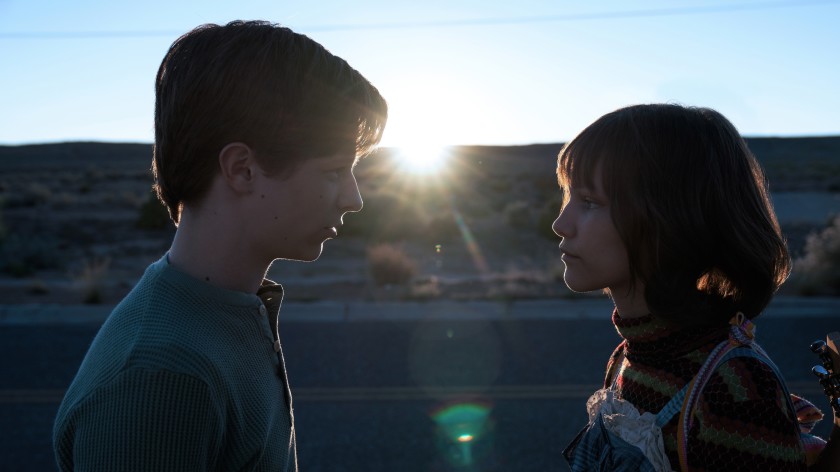The first novel I read that wasn’t school-assigned reading was Jerry Spinelli’s Stargirl. I remember seeing the bright blue cover with a hand drawn star and stick figure girl, and appealing to my minimalistic sensibilities. I used the money I had to buy feather pens at the Scholastic Book Fair to buy the book instead. That was back in 2000, and it was a time when someone like Stargirl was much weirder and much less socially accepted than she is now in 2020. That is the biggest challenge that filmmaker Julia Hart has to undertake in adapting Stargirl, making the story seem as relevant to kids today as it was to me two decades ago. Stargirl doesn’t quite accomplish that. The film has nothing new to say that other films that celebrate “being yourself” haven’t already told us. While delivering charismatic musical performances and being an overall visually interesting film, the story bogs the film down with its predictability and low stakes.
That isn’t to say that there are not some interesting things at play in this script. It’s just that for its intended audience, their recognition or knowledge of the Manic Pixie Dream Girl trope comes into question. I definitely did not know or recognize MPDG trope until years later (Nathan Rabin coined the term in 2005), but the novel does subscribe to the trope. The film follows Leo Borlock (Graham Verchere), who is still dealing with his father’s death. After being bullied at his new school, Leo trained himself to be a wallflower for years until one day Stargirl (Grace VanderWaal) arrives. As someone who truly embraces and celebrates who she is—regardless of what others think, Stargirl gets Leo out of his shell and unites their school through her charming musical performances (“Be True to Your School”) and the generous surprises she gifts the community.
The film tries to undress the trope by adding to and complicating Stargirl’s journey. Instead of making her this impossibly aspirational character, Hart, along with screenwriters Kristin Hahn and Jordan Horowitz, find new ways to ground her. When she “betrays” her school, who view her as their good luck charm, by leaving the big football game early, she goes in the hot seat (literally) and faces not just the student body’s hypocrisy but understands that sometimes her own choices result in hurt and confusion. In the end, her strong grasp on her identity and sense of agency subvert the MPDG trope. Much of that is attributed to making sure that Stargirl’s character doesn’t feel outdated, and it is effective.
However, Hart’s nostalgic approach to the film, while beautiful and interesting, tonally clashes with modernizing the story. I couldn’t marry the two while watching the film. The technical choices, like the handheld camera work and staging, are impeccable and contribute well to some of the more introspective and melancholic aspects of the film. But the bigger musical numbers, like the pep rally / football game ones which require more energy, fall flat and sometimes feel a little forced. It’s the smaller, more intimate musical moments that we see where the songs and performers really shine and elevate the movie experience. (Keep watching past the credits for bonus musical scene that I adored.)
Regardless of the film’s shortcomings, Hart has a distinct and engaging visual style, one that is strong enough to make Stargirl worth watching and makes me look forward to seeing what she does next.
Stargirl is now streaming on Disney+.
Advertisement
